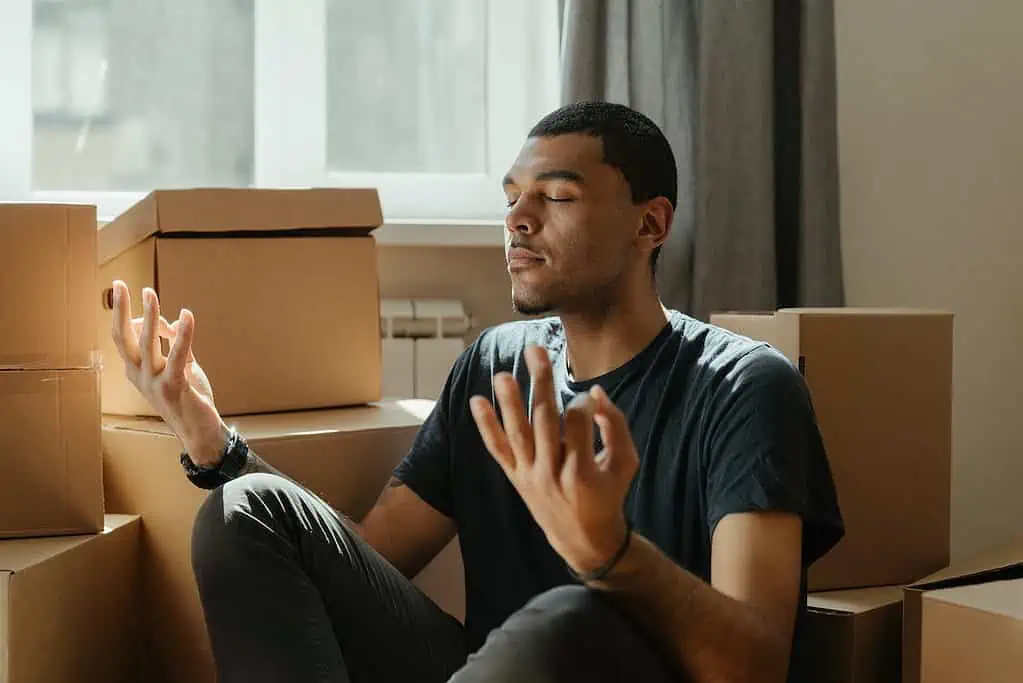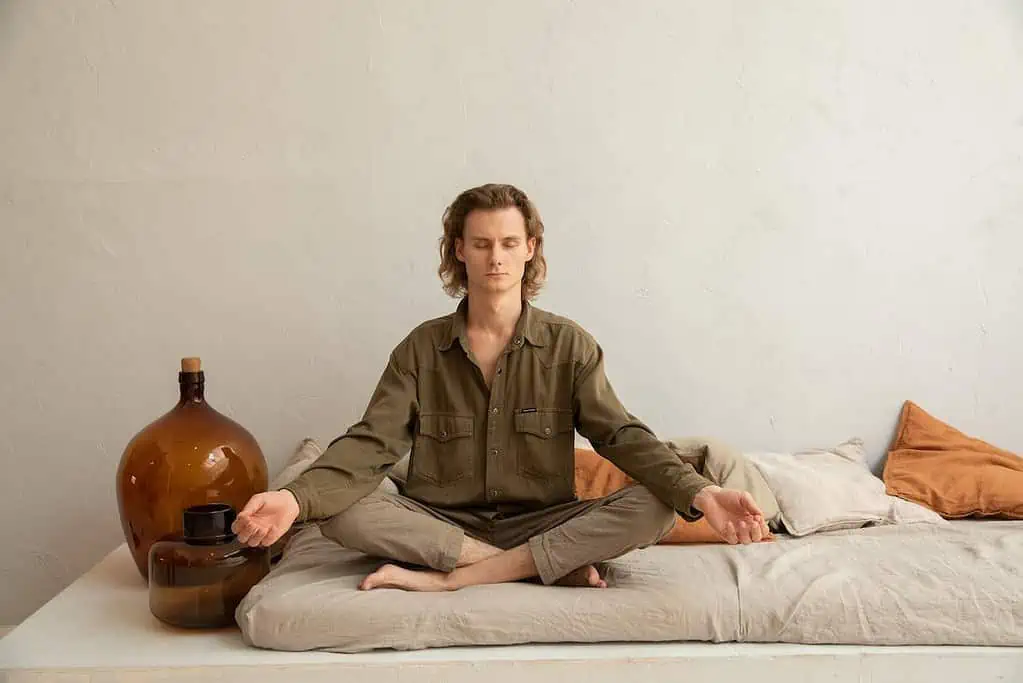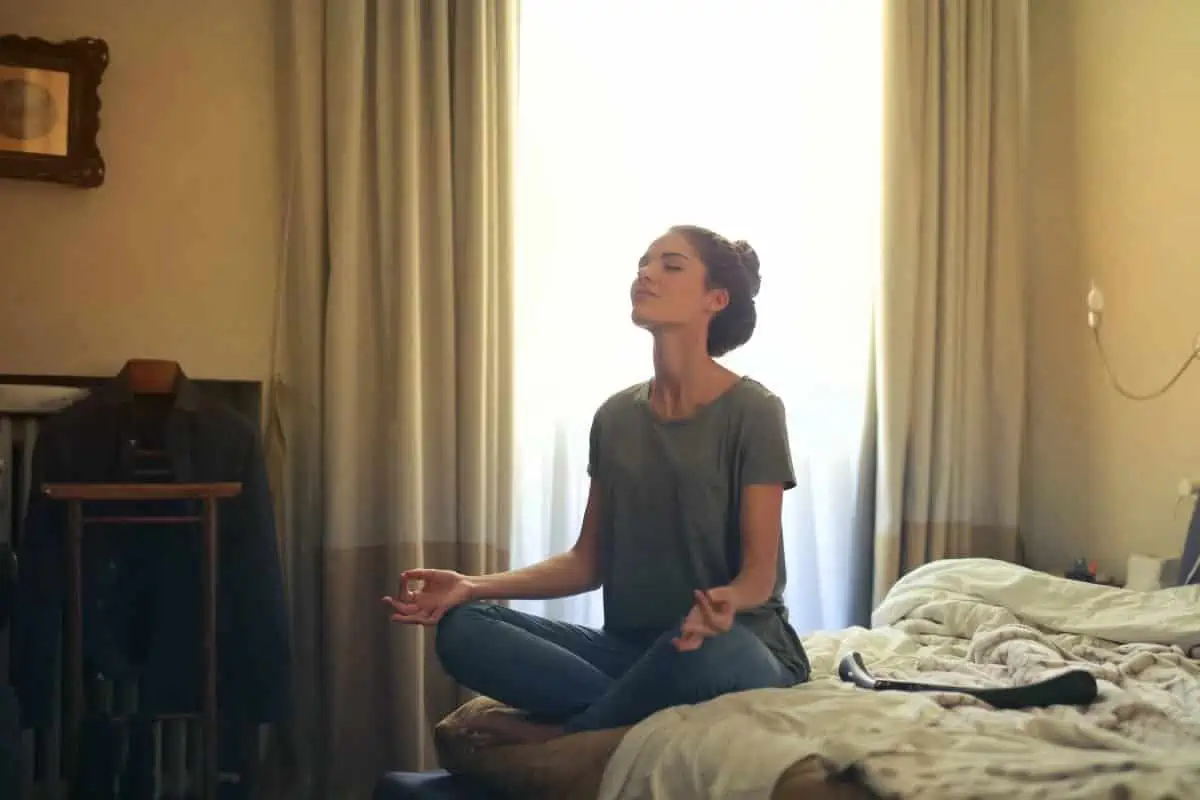Remember the very first meditation session you did where it was a struggle to sit in silence for even one minute? When you were feeling self-conscious and unsure of what the heck you were even attempting to do? Or, that time when your thoughts just wouldn’t settle down like the guided meditation tape was telling you?
Yep, we have all been there. Anybody who has tried to meditate has surely asked themself – ‘why can’t I meditate longer?’
This is the question we will explore today. If you are ready to sit in meditation practice for longer periods of time, to soak up the long term benefits and to improve both your posture and your practice, then this is the perfect in-depth guide for you!
Contents
- 1 Starting with a mindfulness practice – what does that even mean?
- 2 The perfect length of meditation practices – does a time limit exist?
- 3 What are the benefits of longer meditations?
- 4 Comfort is key – treat yourself to a comfortable position when meditating longer.
- 5 Do I need a meditation teacher to help me with long meditation sessions?
- 6 Is a meditation retreat the solution to sit longer?
- 7 Frequently Asked Questions:
Starting with a mindfulness practice – what does that even mean?
Mindfulness is the act of being fully in the present moment. This means focusing your awareness on exactly what is happening around you. Where are you, what are you thinking, what are you feeling? What can you see, hear, or smell? What is in your immediate environment? What is currently having an effect on your mind?
When you can answer all of these questions with clarity and a calm mind, then you are in a state of pure mindfulness. This state of mindfulness is like an activation of all of your senses, but in a wonderful way. It allows you to soak in the preciousness of the present. It allows you to feel deeply and to experience everything with a sense of gratitude for what is unfolding.
If you want a piece of this present-moment awareness, you can use mindfulness meditation practice as a way of amplifying your senses.
All you need to know about mindfulness meditation
Mindfulness meditation sessions contain a few key components.
Start with a deep breath to signal to your body that you have arrived in the here and now. Deep breathing is a way of telling the body it is safe to relax and it is safe to be here..
If you have a history of trauma or high levels of anxiety, it can be hard to arrive in the present moment, because your nervous system is always under stress. In these cases, take the first moments of meditation to focus on arriving and to calm the body as much as possible in preparation to meditate deeper and for longer periods of time.
Once you have fully arrived, with your mind and body in the place where you physically are, you can start to invite in some meditation techniques. Some common mindfulness techniques include:
- Body scan – this looks like carefully focusing on single parts of your body, one at a time, to notice what is happening n each unique part of you. You can scan from head to toe, or you can choose more of a yoga nidra style and jump from one part to the next. The key idea is to focus only on that one part with your full attention.
- Following your thoughts – you can imagine your thougths as clouds passing in the sky. One arrives, you see it, and then it leaves again. Another arrives, and then leaves. You do not need to become attached to your thoughts but just simply acknowledge and notice their presence. Soon, with practice, you will notice gaps between your thought clouds, little moments of stillness. The longer you sit in meditation, the more these gaps of stillness will grow.
- Following your breath – this technique involves following the sensation of the inhale and then the exhale. You will feel the specific sensations this creates in the body. You can also start to notice the small gaps between the in and out breath.
- Using an anchor – this is a meditation object that you can focus on or hold in your hand and use as an anchor to bring you back to the present moment.
Mindfulness meditation is something that will improve the more you practice it. Just like any sport, or artful skill, one must spend many hours training their mind with precision and focus.
The mind wanders naturally, but when you have a mindfulness practice, you will begin to enjoy the small gaps between your breath or the small gaps between two thoughts. This is the great gift of a few seconds of a silent mind.
The more you practice, the more you will enjoy this feeling. It is this stillness of the wandering mind that great yogis and ancient seers sought out for hours each day.
As you work towards an advanced mindfulness practice, you can find this inner stillness in your own home, in the midst of chaos or even on your way to work.

The perfect length of meditation practices – does a time limit exist?
There is no such thing as a perfect length of meditation practice. The perfect time will look unique for you depending on your daily or weekly schedule. For some people, a meditation practice could involve long hours spent meditating, and for others, it may be a simple spontaneous idea to just to sit and meditate for a minute.
The best place to start is with a time that is suitable and achievable for you.
For example, plan a morning meditation routine that fits in with your current schedule. If you have a spare 5 minutes in the morning, then make a 5-minute meditation. Shorter sessions as part of a daily routine will have more benefits than one long meditation session that is never repeated.
Slowly, as you get into a rhythm, you may start to set an earlier alarm, or get into bed earlier to accommodate the extra time needed for your meditation sessions.
But remember, don’t push yourself to sit for long periods of time if it is making you stressed in other areas of your life. This will distract you from the whole concept of mindfulness and will not be beneficial to anyone.
Start small and meditate for the long term
When you start small, you have more opportunities to build on your practice. Every day you can increase your meditation time by 5 to 10 seconds. This is a small but significant increment that will encourage you to work toward longer sessions at a pace that feels fitting for you.
When you gradually grow your practice, you will be focused only of the time of the day ahead of you. In this presence, you will be sitting longer in your daily meditation experience without even realizing it.
If your schedule allows for it, you may do short sessions during the week and enjoy a longer session on the weekend. The idea is to make it sustainable so that you don’t want to stop meditating.
Remember: Don’t compare yourself to others
If you are just setting out on your meditation journey, it is okay to just sit and meditate when you find the time, without putting pressure on practicing daily.
Don’t compare yourself to a monk, they have dedicated their lives to learning the art of mindfulness. Don’t compare yourself to someone else who is further on the meditation journey than you are, for this will only make you feel worse for not meditating.
The only person you should be comparing yourself to is the version of you from yesterday. If every day you can make a small change and a tiny improvement, then you can use the comparison from yesterday to today to track your positive changes in fitting increments.
What are the benefits of longer meditations?
As your practice grows and you incorporate longer periods of meditation into your regular routine, you will start to notice some benefits of meditation in your body and mind.
Meditation can reduce stress, reduce anxiety, and it encourages enhanced attention and focus. You will notice a greater sense of self-awareness and a positive change in your mental health.
Meditation helps to create clarity in your mind, and therefore clarity in your life. The most important thing about meditation is that it will make you feel better in the body and the mind, providing overall well-being.
Short term and long term benefits are similar but the long-term difference is that the benefits become more permanent in your life.
When you meditate daily, you will find it easier to tap into the bliss of the meditative mind. You will also notice that the benefits of meditation start to come out of your sitting position and into your daily life. You will have a positive outlook on all aspects of your life. With increased resilience and self-confidence, you will start to feel better.

Comfort is key – treat yourself to a comfortable position when meditating longer.
When you sit to meditate, you may feel discouraged by the discomfort in your body. Although meditation requires sitting, there are many things that can make you more comfortable, such as meditation props!
In saying this, many meditation techniques will encourage body scans and non-attachment to pain. But if you are beginning your meditation journey, we encourage you to choose comfort to help you to sit and meditate longer.
Should I use meditation props in my meditation practice?
Try using a meditation cushion or meditation blanket to prop up your hips and provide you with a better meditation posture. These props are designed to make meditation easier so that you can simply be in the moment.
Some medical issues or injuries in the hips or legs will also benefit from using a chair for your meditation session. This will allow better blood flow through the body. There are specific meditation benches and chairs to support you, but you can also choose a regular comfortable chair that you already have at home.
One other option for meditation positions is to recline and lay on your spine. In a laying position, it is easier to fall asleep, that’s why seated positions are recommended for beginners.

Do I need a meditation teacher to help me with long meditation sessions?
Meditation teachers are trained in the art of helping a busy mind forget about a busy day. Finding a meditation teacher will help you to go deeper into your meditation practices. Teachers can guide your breath, fix your posture and help answer your questions about meditation.
Is a meditation retreat the solution to sit longer?
If you have been wondering where to begin, you might choose a meditation retreat to learn the basics. These kinds of retreats will explain all of the tools and techniques you need to go from a five minutes meditation to a longer meditation.
On retreat, you will be guided by meditation teachers or experienced meditators to find a practice that feels good for you. With designated days for meditation, it will provide a convenient time for you to learn outside of your daily life. With enough time each day spent on meditation practices, you will experience the benefits of sitting quietly.
You can even make it a holiday with your best friend to learn together and to keep each other accountable for your meditation time once the retreat is over.
Frequently Asked Questions:
What happens if you meditate for longer?
The longer you meditate, the more the benefits of meditation will be concretized in your mind and body. After an extended period, you can experience a sense of bliss and inner stillness during your meditation sessions.
How long should a meditation session be?
The desired amount of meditation depends on how much you prefer meditating and how soon you want to experience the benefits. Shorter sessions, (such as a five or ten-minute meditation) are great for daily check-ins but as you progress you might want to meditate for longer periods to bring your practice to the next level. Incorporate meditation at a time and amount that feels good for you.
Is it good to meditate regularly?
Yes! Meditating regularly is more important than irregular long meditation sessions. Regular meditation takes practice to incorporate into your life, the same way any habit does.
How can I stay motivated to meditate regularly?
When you start practicing to meditate regularly, you will surely notice the positive effects that meditation creates for you. After some time of dedicated practice, you will not need external motivation to meditate, because the urge to meditate will come from within.
When you start your meditation journey, focus on one day at a time, one session at a time. If you skip ahead and focus on the long term, it is more likely that you will lose motivation quickly. On the other hand, if you think, just for today, I can take time to meditate, then you will find, just for today, that time to meditate.
‘Just for today’ is a mantra you can use, everyday, to create the space and enjoyment to meditate. Soon, it will not feel like a chore to meditate, but it will be a simple act of peace that you feel inspired to continue to seek.



